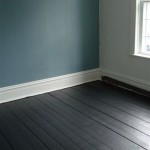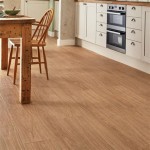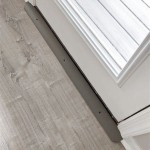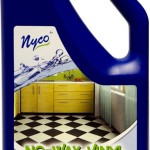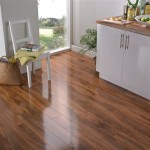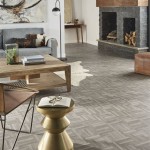Everything You Need to Know About Vinyl Flooring Rolls in Your House
Vinyl flooring rolls, also known as sheet vinyl flooring, represent a cost-effective and versatile flooring solution suitable for various areas within a house. They offer a continuous, seamless surface, which contributes to improved hygiene and ease of maintenance. This article provides a comprehensive overview of vinyl flooring rolls, covering their composition, advantages, disadvantages, installation process, maintenance, and factors to consider when making a purchase.
Vinyl flooring rolls are constructed from a synthetic material called polyvinyl chloride (PVC). The manufacturing process involves layering different materials, typically starting with a felt or fiberglass backing, followed by a printed design layer, and finally, a protective wear layer. The wear layer is crucial for the flooring’s durability and resistance to scratches, stains, and wear. The thickness of the wear layer, measured in mils (thousandths of an inch), directly correlates with the flooring's lifespan and suitability for high-traffic areas.
The designs available for vinyl flooring rolls are extensive, mimicking natural materials like wood, stone, and tile. Advanced printing technology allows for realistic textures and patterns, offering a wide range of aesthetic options to complement any interior design. The seamless nature of rolled vinyl, unlike individual tiles or planks, also contributes to a more cohesive and expansive visual effect.
Advantages of Vinyl Flooring Rolls
Vinyl flooring rolls offer several key advantages that make them a popular choice for homeowners. These benefits relate to cost-effectiveness, durability, ease of maintenance, and design versatility.
Cost-Effectiveness: Compared to natural materials like hardwood or stone, vinyl flooring rolls are significantly more affordable. The lower material cost, combined with potentially lower installation expenses, makes it a budget-friendly option for covering large areas. This is particularly beneficial for homeowners looking to renovate multiple rooms or for those with limited budgets.
Durability and Water Resistance: Vinyl flooring is inherently water-resistant, making it an excellent choice for moisture-prone areas like kitchens, bathrooms, and laundry rooms. The continuous, seamless surface prevents water from seeping through to the subfloor, minimizing the risk of mold and mildew growth. The wear layer provides protection against scuffs, scratches, and stains, ensuring the flooring maintains its appearance for an extended period. Thicker wear layers offer greater protection and are recommended for high-traffic areas or homes with pets.
Ease of Maintenance: Maintaining vinyl flooring rolls is relatively simple. Regular sweeping or vacuuming removes loose dirt and debris. Damp mopping with a mild detergent is generally sufficient to clean the surface. The seamless surface eliminates grout lines, which are often difficult to clean and prone to discoloration in tile flooring. The stain-resistant properties of vinyl make it easy to wipe up spills, further simplifying maintenance.
Design Versatility: The wide range of available designs, colors, and patterns allows homeowners to achieve virtually any desired aesthetic. Realistic wood-look vinyl flooring can mimic the appearance of hardwood without the associated cost and maintenance requirements. Similarly, stone-look vinyl can replicate the look of tile or natural stone, providing a durable and comfortable surface underfoot. The seamless nature of rolled vinyl also allows for unique and custom designs to be incorporated into the flooring.
Disadvantages of Vinyl Flooring Rolls
While vinyl flooring rolls offer numerous advantages, there are also some potential drawbacks to consider. These relate primarily to repair limitations, indentation susceptibility, and potential environmental concerns.
Repair Limitations: While vinyl flooring is durable, it can be susceptible to damage from sharp objects or heavy impacts. Unlike individual tiles or planks, repairing damage to rolled vinyl flooring can be challenging. If a section is significantly damaged, it may require replacing the entire sheet, which can be costly and time-consuming. Smaller scratches or scuffs can sometimes be repaired with specialized repair kits, but the results may not always be seamless.
Indentation Susceptibility: Heavy furniture or appliances can cause indentations in vinyl flooring, particularly in areas with thinner wear layers. While the indentations may dissipate over time, they can sometimes become permanent. Using furniture pads or coasters under heavy objects can help to minimize the risk of indentation. Choosing a vinyl flooring roll with a thicker wear layer can also improve its resistance to indentation.
Potential Environmental Concerns: The production of vinyl flooring involves the use of PVC, which is a petroleum-based product. Some older vinyl flooring products may contain volatile organic compounds (VOCs), which can release into the air and potentially affect indoor air quality. However, many manufacturers now offer low-VOC or phthalate-free vinyl flooring options, which are more environmentally friendly. When selecting vinyl flooring, it is advisable to look for products that are certified by independent organizations, such as FloorScore, to ensure they meet stringent emission standards.
Installation of Vinyl Flooring Rolls
Proper installation is crucial to ensure the longevity and performance of vinyl flooring rolls. The installation process typically involves several steps, including subfloor preparation, cutting and fitting the vinyl, and securing it to the subfloor.
Subfloor Preparation: The subfloor must be clean, level, and dry before installing vinyl flooring. Any imperfections, such as cracks, holes, or unevenness, must be repaired to prevent them from telegraphing through the vinyl. A self-leveling compound can be used to create a smooth and even surface. In some cases, an underlayment may be necessary to provide additional cushioning and sound insulation.
Cutting and Fitting: Precise cutting and fitting are essential for a seamless and professional-looking installation. The vinyl flooring should be carefully unrolled and positioned in the room, allowing for a slight overlap at the edges. Using a sharp utility knife, the vinyl is then trimmed to fit the room's dimensions, ensuring a tight fit against walls, doorways, and other obstacles. A seam roller can be used to flatten the vinyl and remove any air bubbles.
Securing the Vinyl: Depending on the size of the room and the type of vinyl flooring, it can be secured to the subfloor using different methods. For smaller rooms, perimeter bonding with double-sided tape or vinyl adhesive may be sufficient. For larger rooms, full spread adhesive is typically recommended to ensure the vinyl remains securely in place. The adhesive should be applied evenly to the subfloor using a notched trowel, following the manufacturer's instructions. After applying the adhesive, the vinyl is carefully rolled out and pressed firmly into place to ensure proper adhesion.
Professional installation is generally recommended, especially for larger rooms or complex layouts. Experienced installers have the tools and expertise to ensure a proper and long-lasting installation.
It's worth noting there are different types of installation methods such as loose lay. Loose lay vinyl is designed to stay in place with its own weight, and only requires adhesive at the perimeter, or not at all. Consulting with flooring professionals or researching specific product guidelines is crucial to determining the best installation method.
Maintenance of Vinyl Flooring Rolls
Proper maintenance is essential to prolong the life and appearance of vinyl flooring rolls. Regular cleaning and preventive measures can help to prevent damage and keep the flooring looking its best.
Regular Cleaning: Sweep or vacuum the flooring regularly to remove loose dirt and debris. Use a soft-bristled broom or a vacuum cleaner with a floor brush attachment. Damp mop the flooring with a mild detergent and warm water. Avoid using abrasive cleaners or scouring pads, as they can damage the wear layer. Always follow the manufacturer's recommendations for cleaning products and procedures.
Spill Cleanup: Clean up spills immediately to prevent staining. Use a clean cloth or paper towel to blot up the spill. Avoid rubbing, as this can spread the stain. For stubborn stains, use a mild solution of baking soda and water or a specialized vinyl flooring cleaner.
Preventive Measures: Place mats or rugs at entrances to trap dirt and debris and prevent them from being tracked onto the flooring. Use furniture pads or coasters under heavy furniture to prevent indentations. Avoid wearing shoes with high heels or cleats on the flooring, as they can scratch or damage the surface. Protect the flooring from direct sunlight by using curtains or blinds, as prolonged exposure to sunlight can cause fading or discoloration.
By following these maintenance tips, homeowners can prolong the life and beauty of their vinyl flooring rolls for many years.
Factors to Consider When Purchasing Vinyl Flooring Rolls
Selecting the right vinyl flooring roll requires careful consideration of several factors. These include the intended use, traffic level, budget, and desired aesthetic.
Intended Use and Traffic Level: The intended use of the room and the expected traffic level should influence the choice of vinyl flooring. For high-traffic areas like kitchens and hallways, a thicker wear layer is recommended to provide greater durability and resistance to wear. For bathrooms and laundry rooms, water resistance is a crucial factor. For bedrooms or living rooms, a softer and more comfortable flooring option may be preferred.
Budget: Vinyl flooring rolls are available in a wide range of prices, depending on the quality, design, and wear layer thickness. Set a budget before shopping and compare prices from different retailers. Consider the long-term cost of ownership, including installation and maintenance expenses. While a cheaper option may seem appealing initially, it may not be as durable or long-lasting as a more expensive option. Choosing a reputable brand and reading product reviews can help to ensure a good value for the investment.
Design and Aesthetic: Select a design and color that complements the overall interior design of the house. Consider the existing furniture, wall color, and lighting. Vinyl flooring rolls are available in a wide range of designs, including realistic wood-look, stone-look, and tile-look options. Choose a design that is both aesthetically pleasing and practical for the intended use of the room. Samples should be viewed in the room where the vinyl will be installed, under natural and artificial lighting, to ensure the color and design are a good match.
Everything You Need To Know About Vinyl Flooring Tarkett

How To Lay Sheet Vinyl Flooring

Vinyl Flooring Guide For Homes Everything You Need To Know

2 Types Of Vinyl Flooring Which Is Right For Your Home

What Is Sheet Vinyl Flooring It Made Of America

Transform Your Home Installing Vinyl Flooring Over Ceramic Tiles City Wall And Floor

Everything You Need To Know About Vinyl Sheets Designcafe

A Beginner S Guide To Installing Vinyl Plank Flooring Dumpsters Com

What Is Lvt Everything You Need To Know About Luxury Vinyl Tile Vevano

L Stick Wood Grain Vinyl Flooring Roll Waterproof Removable Self Floor Sticker With Herringbone Pattern 3 Colors Beige Gray White Durable For Kitchen Bathroom Bedroom Home
Related Posts

